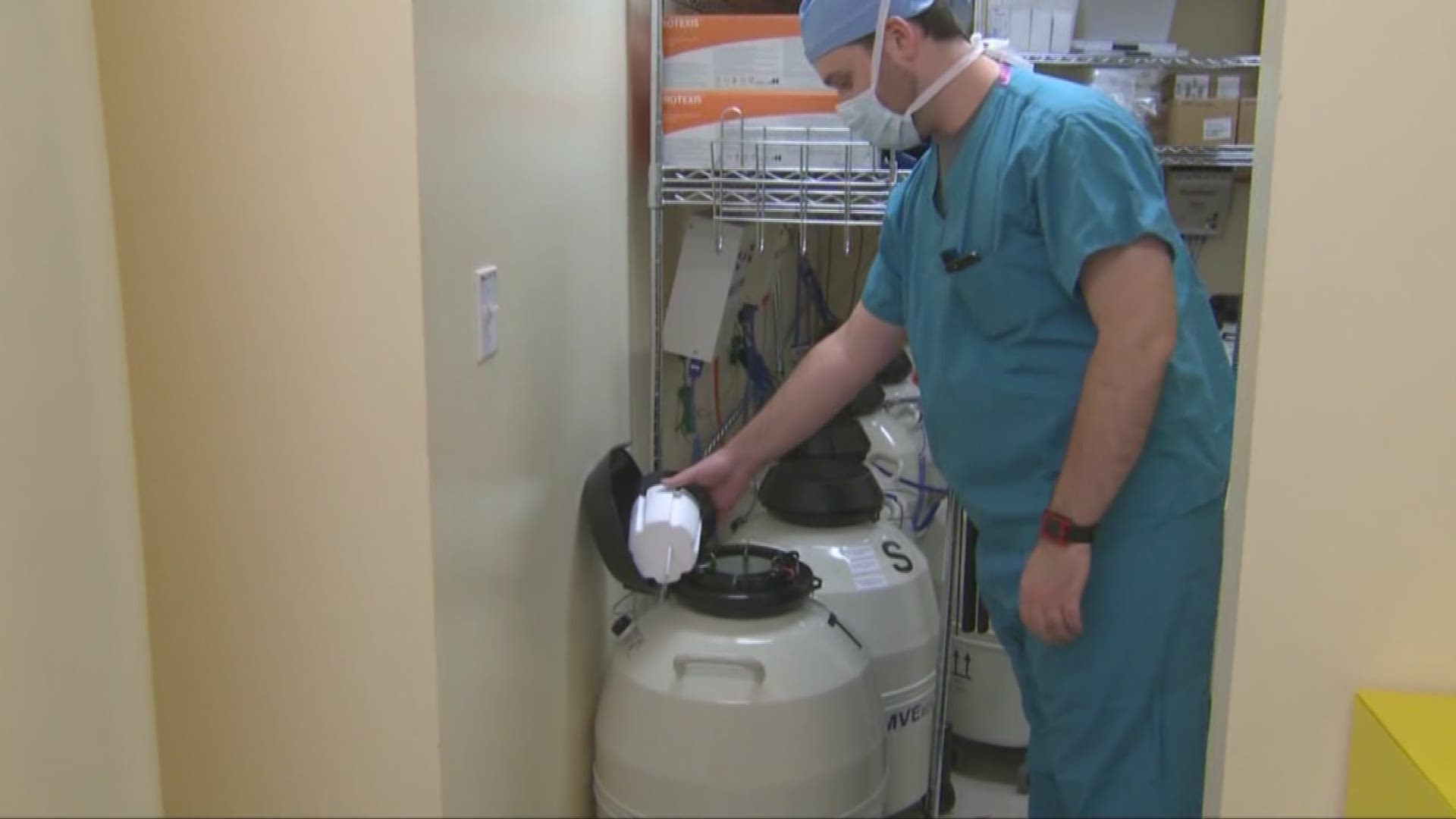The Centers for Medicare and Medicaid Services (CMS) has handed over its investigation of the University Hospitals Fertility Clinic crisis to the hospital.
While we're still waiting to hear from UH, we do know CMS sent the results of the investigation to University Hospitals on April 2nd. The public has access to the report 30 days after that, but UH has indicated it is working with those agencies to make sure all recommendations are put into place.
You'll recall on March 26, University Hospitals sent a letter to the 950 families impacted and stated it was human error that caused the destruction of the eggs and embryos in the long-term storage tank.
The hospital admitted that someone had shut off the remote alarm system that would have alerted a hospital employee that there was a fluctuation with the temperature in the tank. They have since updated that alarm system and it now alerts three people instead of one.
UH also admitted that the tank needed preventative maintenance and that the automatic fill system wasn't working correctly. That meant that employees had been manually filling the tank with liquid nitrogen from the top.
On March 27, the tank manufacturer, Custom Biogenic Systems (CBS), issued a statement to NBC News indicating their tank was not the cause of the failure, rather it was due to human error.
The product manual says: "IMPORTANT: It is not recommended to attempt to manually fill the Isothermal Storage Unit by opening the lid and placing a fill line over the edge into the vessel. This is an incorrect fill method and will cause liquid nitrogen to come into contact with the stored samples."
CBS added other points in their response to NBC:
- The CBS unit is not designed to detect or monitor liquid nitrogen levels for liquid nitrogen poured into the top of the tank.
- CBS had nothing to do with the non-availability of liquid nitrogen tanks in the Embryology Lab several days prior to the weekend in question.
- CBS did not design, manufacture, install or monitor any remote alarm system on the unit. CBS played no part in turning off the remote alarm referenced in the UH letter.
While we don't know the exact cause of what caused the tank to warm up, we do know that the hospital has been forthcoming with accepting responsibility. What's next is seeing if this failure sparks new legislative change regarding fertility clinics and what the hospital will be doing to protect patients in the future.
MORE | In a statement given to WKYC on Tuesday, University Hospitals added the following about their work with CBS:
At University Hospitals, we’ve been working with the tank manufacturer and other outside experts to try to determine the ultimate cause of the failure. We’re working together to find answers. But we still have not gotten to that ultimate cause. We intend to continue to work with the tank manufacturer to ensure this does not happen again.
We’ve been careful to not assign blame. But we’ve accepted responsibility. We will not comment any further due to pending litigation.

